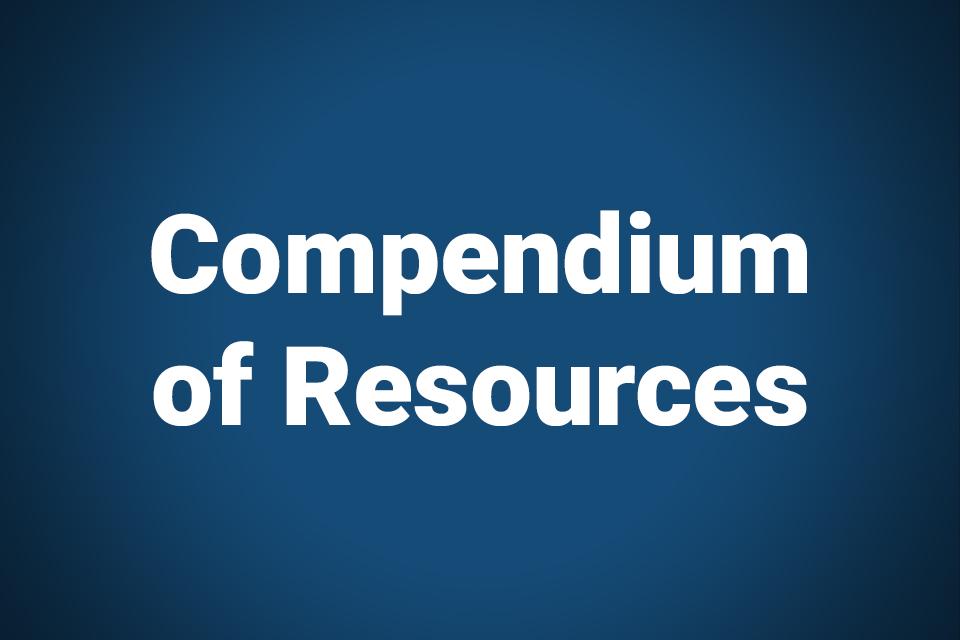Tools in this section have been gathered and vetted for usefulness and relevance to a wide range of volunteer and paid fire services organizations in rural, suburban, urban, and tribal locations, among others. After completing the VT–ORG for Fire Services, use the VT–ORG Scoresheet and Action Plan to analyze the results and prioritize the areas of organizational health you identified as challenges. Then, use the resources and research literature in the toolkit to implement strategies to build your capacity as a vicarious trauma-informed organization.
If you care for your people as much as you care about your equipment and you care about your buildings, you'll help give them the tools that they need in order to cope with the things that they are seeing that are not normal in a person's life.
—Shawn S. Kelley, Director of Strategic Services, International Association of Fire Chiefs
See the YouTube Terms of Service and Google Privacy Policy
Organizational Strategies
To address the impact of vicarious trauma, leaders in vicarious trauma-informed organizations proactively integrate strategies into workplace values, operations, and practices; maintain a clear vision that supports and articulates the agency's mission; and regularly model and promote open and respectful communication.
Voices From the Field
I am the mentor for our station. We have had several incidents involving people the age of our responding members. The effect on the rookies who responded to these incidents was varied but made an adverse impression on the rookies and younger members. Several of the officers basically gave them a "suck it up" speech. And for some of the firefighters, that was enough to get them through the work cycle. For others, especially those involved with direct patient care, it made things worse. Not just for them but for us when we had to untangle the incidents and how the members were (not) dealing with it. We (the mentoring group) ended up recommending six for EAP counseling, which the Department supported once I went up to the Chief and explained how important it was to get these folks help. Basically I told him, if we are to believe we are family then we should behave that way. Our family needed help and it was our responsibility to get the help locked on. I may never become an officer but I don't want to go to a firefighter funeral because we didn't do our best for each other. The Chief also disciplined the officers who made the unfortunate "suck it up" remarks and is working to change the culture of the older officers. This is going to be a work in progress. We are learning...slowly. Hopefully we can take care of each other as well as we take care of our citizens.
—Master Firefighter/Paramedic, Fire Services
What the Research Literature Tells Us
Open and transparent communication regarding organizational mission, strategy, resources, and implementation of policies and procedures provides a strong foundation within the agency. It is important for leadership to provide clear information about the "why's and how's" of decision- and policymaking, and to encourage staff ownership in these efforts. Leadership should also foster a culture of openness across the agency, encourage effective exchange of feedback, and recognize the contributions and accomplishments of staff (Brondolo et al. 2008).
Featured Tool
Related Resource
To fulfill their obligation to lessen the impact of vicarious trauma, managers and supervisors in vicarious trauma-informed organizations foster supportive relationships based on inclusivity, mutual respect, and trust; promote policies and practices that lessen the negative impact of the work; seek out and support staff following critical or acute incidents; and conduct performance evaluations that include discussions of vicarious trauma.
Voices From the Field
I have participated in several Critical Incident Stress Debriefing meetings and found these to be very beneficial. These meetings are reactive rather than proactive, but I found my mood and understanding of what I went through improved.
—Battalion Chief, Fire Services
Critical Incident Stress Management allows for an open expression of thoughts among peers regarding a recent event. It allows others to express their feelings without judgment and with a sense of security. Many are afraid to share feelings that would symbolize mental weakness; therefore, they hold in their feelings if not prompted to express them in a familiar and safe environment.
—First Line Supervisor, Fire Services
I've been through some experiences in my life when I can reflect back and go, yeah, that's someplace that I don't want anyone to be at for personal or work reasons. Being happy and content with who you are and what you're doing is huge. It gets you to work. It makes you want to do all of those things that you were trained to do. If you're depressed and you're not mentally healthy then all of that suffers. Your relationships suffer, work and personal. Everything suffers if you're not mentally healthy. Anything that your department can do to make that happen has got to be a priority.
—Investigator, Fire Services
What the Research Literature Tells Us
Supervisor and coworker support are important mechanisms for effective functioning and guidance. Peer support programming, Critical Incident Stress Management (CISM), and family support in the aftermath of critical incidents have proved effective in responding to posttraumatic stress disorder and vicarious trauma (Everly, Boyle and Latting 1999).
Written policies and established programs help define the standard of practice that guides an organization's consistent response to its staff. They also remove stigma and feelings of subjectivity by delineating which staff will be asked to employ which strategies or programs and under what circumstances. In the first responder fields, standard orders and protocols such as Critical Incident Stress Debriefing provide clear guidance and expectations for responding to staff in the aftermath of a critical incident. In addition, in their study, Bober and Regehr (2006) found that the primary predictor of vicarious trauma is the number of hours per week staff work with traumatized individuals. Therefore, organizations can help reduce trauma exposure among their staff by developing strategies to distribute the workload.
Featured Tools
- Human Resource Guidelines for a Vicarious Trauma-Informed Organization
- Supervision Guidelines for a Vicarious Trauma-Informed Organization
- Employee and Volunteer Assistance Program Guidelines For a Vicarious Trauma-Informed Organization
Related Resources
To promote and maintain a healthy work environment, vicarious trauma-informed organizations foster teamwork; encourage collaboration both within and outside the organization; create formal and informal opportunities for staff to connect with one another; and offer opportunities to diversify job tasks.
Voices From the Field
The ability of personnel to express themselves freely (within reason) helps to maintain a free exchange of information and support of all individuals.
—Chief, EMS/Medical/Fire Services
I have found that offsite retreats and events are most effective as we are removed from our usual work environment and the stress that surrounds it.
—Dispatcher, Emergency Management
What the Research Literature Tells Us
Work culture describes the environment and tone of the organization. Work culture is an enormously influential factor in addressing vicarious trauma because it helps shape understanding of this trauma as an expected and normal response to trauma exposure, which makes it easier for staff to openly seek and accept support. Feeling included, connected, accepted, and respected creates a safe and supportive environment that decreases the negative impact of vicarious trauma on staff (Bell, Kulkarni, and Dalton 2003; Slattery and Goodman 2009).
Staff that have access to their organization's strategic plans and other relevant information experience lower levels of vicarious trauma (Choi 2011). Having a voice and some influence over decisionmaking fosters a sense of ownership and empowerment, a deeper commitment to the work, greater buy-in to the mission, and a sense of confidence that one matters in the organization.
Featured Tool
Related Resources
To strive for professional competency, capacity, and staff retention, vicarious trauma-informed organizations promote continuing education, professional development, and networking opportunities; provide thorough orientation and ongoing training; enable access to resources; and support staff participation in on- and offsite learning opportunities.
Voices From the Field
The department should help guide company officers in identifying vicarious trauma, providing information on emotional and health-related experiences and actions that can immediately be taken.
—Advisor, Fire-EMS Emergency Management
[At] the trainings I have attended...speakers gave valuable information on how to keep doing this work and stay as sane as possible, seeing the awful side of humanity on a daily basis.
—Firefighter/Paramedic, Fire Services
What the Research Literature Tells Us
Training on vicarious trauma benefits participants and the populations they serve, and facilitates change in the organization (Gentry, Baggerly, and Baranowsky 2003; Mishara and Martin 2012).
Featured Tool
Related Resources
To maintain the health and wellness of their staff, vicarious trauma-informed organizations recognize links between health/wellness and staff satisfaction and productivity; devote time and resources to promoting staff well-being; encourage and provide health and wellness activities; and incorporate wellness into policies and practices.
Voices From the Field
The Employee Assistance Program (EAP) is confidential and employees can self-select to take part to maintain confidentiality. In the fire service, the "tough" or "macho" persona may make seeking help difficult, so the EAP provides a way to seek help and support outside of the fire department.
—Chief, EMS/Medical and Fire Services
Physical fitness equipment in all stations are provided and employees are encouraged to use them; however, there is no mandatory fitness program...physical fitness training is allowed every work shift to provide a physical release to the stressors of public safety.
—Chief, EMS/Medical and Fire Services
What the Research Literature Tells Us
Increasingly, organizations are recognizing that they can improve overall staff health by providing access to wellness activities, such as fitness, yoga, and mindfulness programs; and by supporting boundaries between work and home. For example, mindfulness programs have been found to increase compassion satisfaction and decrease compassion fatigue (Thieleman and Cacciatore 2014), and to decrease posttraumatic stress symptoms among police officers (Chopko and Schwartz 2013).
Featured Tool
Related Resources
- Issues of Stigma for First Responders Accessing Support for Post-Traumatic Stress
- National Children's Advocacy Center Employee Satisfaction Survey 2014
- COPS Officer Safety and Wellness Initiatives
- BJA National Officer Safety Initiatives
- Germantown Fire Department, Standard Operating Procedure 11.06: Physical Fitness Program
- A Guide to Managing Stress in Crisis Response Professions
- Breaking Free from the Prison of Intrusive Thoughts
Compendium of Resources
Each of the over 500 listings in the Compendium of Resources includes the resource title, source, and author or developer, as well as a general description identifying the category, discipline, organizational strategy, topic, and CDC code, if applicable. Research literature items include full bibliographical citations.
Blueprint for a Vicarious Trauma-Informed Organization
For a step-by-step guide to strengthening your organization's response to vicarious trauma by using this toolkit, see the Blueprint for a Vicarious Trauma-Informed Organization.



